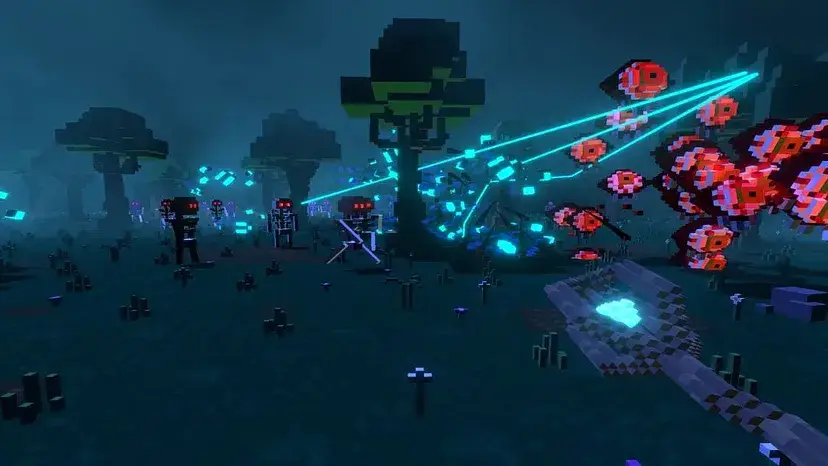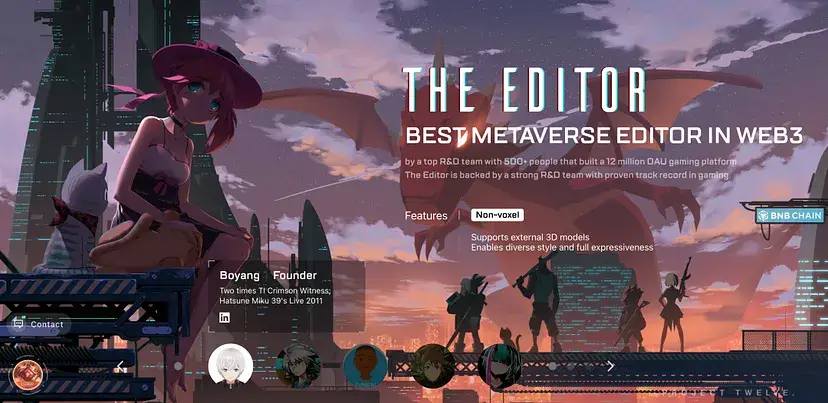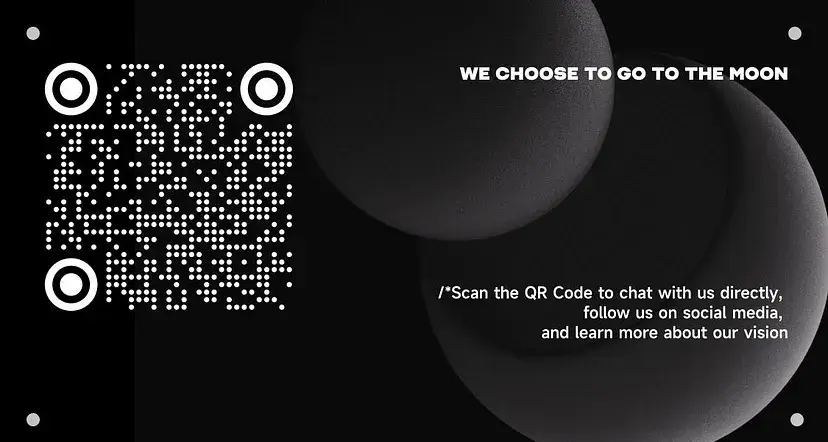Back
Moonshot Mafia #14 | A Viable Solution to the Continued Prosperity of Web3 Gaming
Fireside Chats
By Moonshot Commons
Jun 9,202310 min read
At Moonshot Commons’ Web3 Fireside Chat #14, we invited our good friends and community mentors Boyang, founder of Project Twelve (P12), and Xiankun, co-founder of rct.ai, to discuss the viable solutions to the continued prosperity of Web3 Gaming.
Project 12, P12 in short, is a Web3 gaming platform and game creator ecosystem. P12 aims to make game creation accessible and game economy sustainable. The scope of the project covers the Editor, a full-featured creator tool for building game worlds; the Infra, a set of API/SDK and developer portals for bridging game content on-chain; and the Econs, a set of economic and governmental rules and mechanisms implemented in EVM smart contracts. P12 is built by a team that’s experienced in Web3 & crypto, strong in R&D, and insightful in gaming platforms. The team previously built the No.1 mobile gaming platform with 12M daily active users and 200M total registered users.
rct.ai is providing AI solutions to the game industry and building the true Metaverse with AI-generated content. By using cutting-edge technologies, especially deep learning and reinforcement learning, rct.ai creates a truly dynamic and intelligent user experience both on the consumers’ side and production’s side. They believe the next generation of gaming experiences will be more open-world, more immersive, and more intelligent. The interaction between human players and the virtual world will be more dynamic and multiplex.
Key Takeaways:
1.Web3 games are more decentralized, personalized, and sustainable compared to traditional games, but they are still in their early stages and growing rapidly.
2.Many Web3 games right now are, essentially, money markets, lacking in entertainment value and economic sustainability.
3.Developers who spend a lot of time and money on creating a game to practice a new concept may find themselves unable to catch up with the market trends.
4.AI models can enhance Web3 games and create a more personalized, open, and dynamic gaming experience.
5.P12’s project aims to provide sustainable economic templates, tutorials, and case studies in gaming to help developers promote and sell their games.
6.Developers should be inspired by previous projects, iterate, and share their knowledge with the whole ecosystem.

“It’s a common expectation among GameFi practitioners to make the game include both financial and gaming attributes.”
Moonshot Commons:
First of all, can you both please introduce yourselves briefly and tell us about how you got into the Web3 gaming industry?
Xiankun:
Hello, I am Xiankun, co-founder of rct.ai. The core logic of rct.ai is to provide AI technology solutions for virtual games. We have helped large companies with anti-cheating systems, language processing, and intelligent NPCs in-game scenarios. Our core technology is Chaos Box, an AI narrative engine based on deep reinforcement learning that generates NPCs with different behavior patterns and lines of dialogue at scale to help developers create truly intelligent gaming experiences.
At the same time, our team is using technology to explore more possibilities in the gaming space. We are also incubating Delysium, and hope to make Delysium the world’s first playable 3A Web3 game that uses AI to assist in exploring the open realm. We expect to launch and refine more asset-interoperable games and develop tools in our AI-enabled GameFi project.

Boyang:
Hello everyone! I’m the founder of Project Twelve (P12). I would call myself an avid gamer — I have played countless games of all kinds and am even at the Tokyo Game Show right now.
In 2018, I started to enter the crypto space and built the largest mobile gaming platform in the Chinese market with my team. Now, with P12, we want to build a revolutionary gaming ecosystem with a sustainable economy.

“Many Web3 games are essentially in an over-packaged money market, which can only benefit quickly in the absence of regulation.”
Moonshot Commons:
From your experience, what are the main points of differentiation between Web3 games and traditional games? We all know that the crypto market is volatile. What do you think about the economic sustainability of crypto games?
Xiankun:
It’s often said nowadays that in the blockchain or Web3 gaming space, developers don’t make products that are interesting enough, and that many Web3 games look very simple and nowhere near as good as Minecraft, DOTA, etc.
I think developing games is not a difficult task. It’s not because those developers don’t want to make a good game, but because the Web3 Gaming industry is still in its early stages with frequent changes. For developers, if they want to practice a new concept, spend a lot of time and money on a game, and end up with a finished product, they will likely not be able to catch up with the market trends anymore. This uncertainty doesn’t come from developers but from the structure of the market as a whole.
“The industry is evolving too quickly.”
But overall, I’m optimistic about the future of Web3 games. First, more and more game developers are entering the Web3 gaming industry. They are trying to figure out a workable incentive and a profitable model and develop interesting games that will attract more designers, eventually creating a virtuous cycle.
Second, Web3 can provide a good model for game distribution and reduce the friction between publishers. We are working on a new publishing model that allows each player to layer incentives on top of our content, creating a new motivation. If players invite others into their “worlds”, they will have their own token economic system, which could potentially evolve into a balanced system in the future.
The key feature that sets Web3 games apart from traditional games is that they are decentralized. However, if too many players vote to change the token economy, there will again be a “tyrant”, or a situation where the majority controls the system. What we are doing is allowing players to get different incentives in one game, solving the problems of traditional games and making Web3 games more decentralized, personalized, and sustainable.

Boyang:
A lot of Web3 games nowadays are not really part of the gaming space. Many Web3 games are actually Ponzi schemes using digital assets. Players aren’t really playing the game. They’re only playing it because it’s profitable. For example, people develop resources and buy assets in the virtual world of Axie Infinity, and everyone expects to get cash in return.
In other words, as long as someone likes a game and pays for it, it qualifies as a good game. But if everyone plays the game to make money, then it is a different story. Such a Web3 game has neither entertainment value nor a viable economic model.
A high-quality game should not only attract speculators but also a group of players who will actually pay for the experience. That’s what makes it a viable economic model. Just like in reality, everyone is working, but not everyone truly loves what they do. Nonetheless, they are creating a valuable service or product that others pay for.
Moonshot Commons:
Some people consider Dark Forest to be the standard for Web3 games. What do you think about this game? Is it possible to store all the data of the game on the chain?
Boyang:
I don’t think it’s realistic to store all parts of the game on the chain.
I really like Dark Forest, but it’s not really a “complete” game. It doesn’t have a lot of features. It’s just a proof of concept.

Xiankun:
Given the lag caused by the KVM model, a lot of games don’t really work for having all the actions, assets, and interactions on the chain.
Kernel-based Virtual Machine (KVM) is an open-source virtualization technology built into Linux®. Specifically, KVM lets you turn Linux into a hypervisor that allows a host machine to run multiple, isolated virtual environments called guests or virtual machines (VMs).
In fact, many games only have some core assets that will be put on the chain as actual NFTs from the very beginning; the rest remain off-chain.
But now, the core question we should think about the most is — what exactly is the connection between the gaming industry and the crypto world? The crypto world is on the rise, but there is no clear definition of what a Web3 game is.
Second, creating a game is not just about technology but also about ideology. We can reorganize the industry by reconstructing the game industry chain: who is the distributor and who is the developer? What is the revenue-sharing relationship between production companies, distribution channels, publishers, and even game players? There may be changes in all these areas.


“Startups largely dominate all emerging industries.”
Moonshot Commons:
As we look beyond the next decade, what can the hyper-financialization of game assets bring to the gaming community? How will it affect the gaming culture? Where do the games you are building yourselves stand in the industry?
Boyang:
In the last 20 years, many battle royale games and tower defense games, including DOTA, LOL, Free Fire, etc., have been made by map editing or modeling. If you trace back to the origins, they were all made by PGCs. PGCs are good at high-quality graphical assets and performance tweaks, taking something already good and making it better. However, if we focus on the creative side, we find that great ideas are often created by the masses, not talented game designers.
Web3 games are actually open source, where you can just build on top of what someone else has and everyone can be involved, and the most balanced and interesting version will come out on top. People will keep building new things on top of what there has. This is a stark contrast to the current culture of the gaming industry — everything is closed-source. Gaming companies protect their source code like a trade secret. Many people dream of creating a game, but can’t do it because of its inaccessibility and high cost.
P12 and startups should focus on building long-tailed games, creating more personalized games that appeal to a group of interested players. This will not only provide new options for game creators and players but will also drive the entire industry to grow at scale. If we can replicate this model of PGC, creating graphical assets for gameplay templates and letting UGC (user-generated content) iterate on ideas, it could be a revolution in gaming.

Xiankun:
I agree that both PGC and UGC are important. On the other hand, I am particularly interested in the development of AI models, which can create a more personalized, open, and dynamic gaming experience. We can use AI to enhance Web3 games. Artificial intelligence can not only recognize images and write articles but also be used in great game engines to participate in building games. In this self-growing world, virtual creatures need to be intelligent. We also attempted financial properties by issuing a kind of AI to play against other players to improve the matching efficiency and help users to play the game to earn income.
Second, we are thinking about how to protect everyone’s right to govern the game and change the token economy of the game by voting. For example, in the case that 51% of people say we should change the gameplay and 49% disagree, people should have the right to fork a game, but it’s very difficult and the cost of building another game would be very high.
Third, we want people to use AI tools to create a lot of content and to play with their friends. These are important cultural and cognitive shifts for both players and game developers.
Moonshot Commons:
We’ve talked a lot about gaming and the player experience. How will you, as the founders of the project, get involved in this Web3 Gaming wave? What lessons can you offer to other entrepreneurs?
Boyang:
We, at P12, have our own popularity as a Web3 gaming platform and can do user acquisition, marketing, and promotion for other games. Our project is to provide sustainable economic templates, tutorials, and case studies in the game to show how other games work. It is quite difficult to get revenue for many games and the only way to get revenue is to appear as an IPO on Steam. If you do the math, you will find that even when 5,000 or 10,000 people like a particular game, the developer won’t even recoup the cost of developing the game. Therefore, we help these “starving artists” to promote and sell their games.
The team members have experience in developing game platforms, and I have talked to other game developers. In recent years, a lot of high-end-looking developer tools have appeared, but none of the developers were attracted to these tools. To develop a game, we want people to get into and explore the world. The tools or infrastructure are important, but the need of the players is their primary goal in mind. Secondly, it is important to know how to earn profits and turn the project into a sustainable business model.
We hope that game developers will be inspired by the previous projects, iterate their own projects, run them through trial and error, and eventually share their knowledge with the whole ecosystem.
